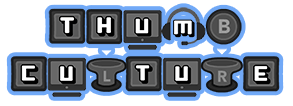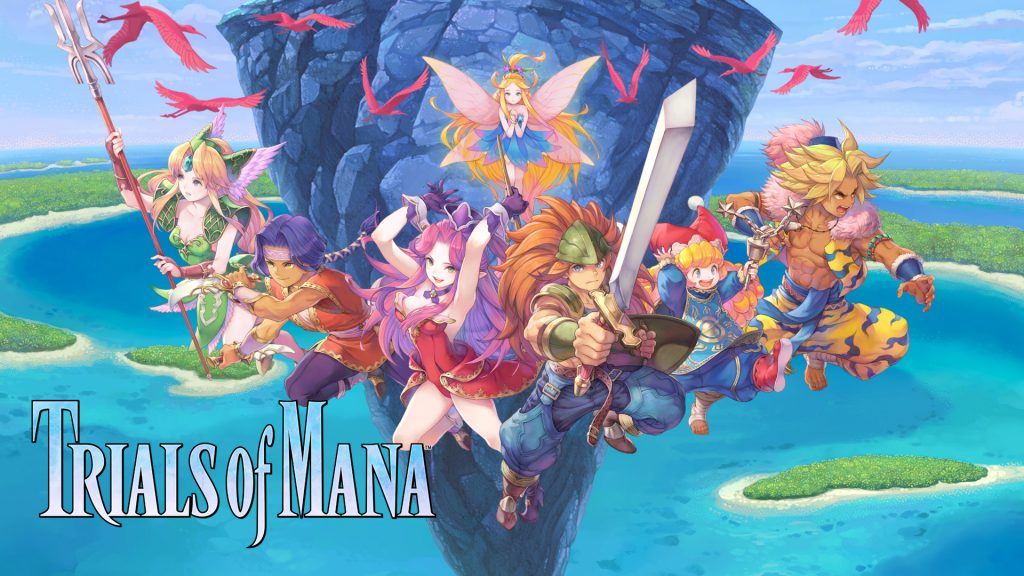
Legendary RPG developers Square released Secret of Mana released on the Super Nintendo in 1993. While considered by many to be an RPG classic, disappointing sales led to its sequel, known in Japan as Seiken Densetsu 3, never being localised for English-speaking audiences. Fans have made valiant efforts to translate the fairly substantial script but until very recently the game has not been widely available to Western audiences who weren’t cool with emulation. This has all changed with the release of Collection of Mana, a compilation of the original trilogy of games, in which Seiken Densetsu 3 was renamed Trials of Mana. Now a fully 3D Trials of Mana is here to satisfy those with a hankering for the polygonal. It released on Switch, Playstation 4 and Microsoft Windows on April 24 2020, with the digital PS4 version costing £44.99.
Trials of Mana, like the Secret of Mana remake before it, takes the action into the 3D realm. Trials of Mana makes significant improvements upon the Secret of Mana remake, but does it do enough to appease RPG fans in 2020? Read on.
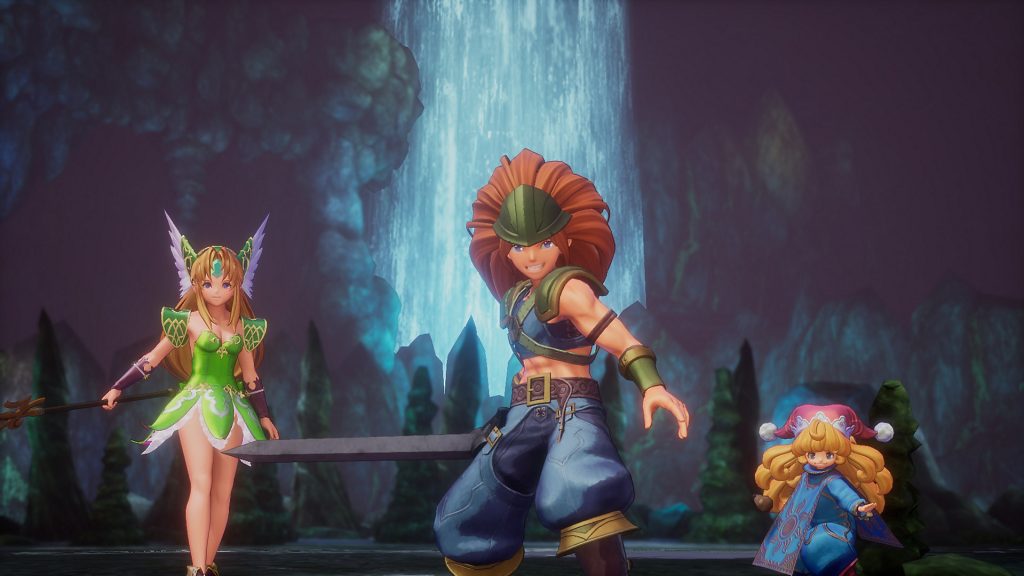
Gameplay
In Trials of Mana you pick a team of three heroes from a selection of six and designate one of them to be the main character. Each character belongs to a different class, which determines which abilities will be available to them as they level up. Angela is a mage, and can learn a number of offensive spells. Kevin is half-human, half-beastman, and therefore his play-style is focused around up-close-and-personal brutality.
The first chapter of the game follows your chosen character and explains their motivations. Hawkeye the thief begins in the fortress of Nevarl. Hawkeye and his compatriots are Robin Hood types, stealing from the rich to give to the poor. Unfortunately Flamekhan, leader of the thieves, is not acting himself following the appointment of Belladonna, a seductive woman with dark magical powers. Hawkeye soon becomes implicated in a tragedy which forces him into exile. Each of the other 5 characters has their own reasons for setting out on their journey, and I don’t think it’s a spoiler to say that each character’s journey ends with them confronting the architect of their misfortune. The villains of Trials of Mana appear throughout each of the main characters stories, even if they do not play a pivotal role.
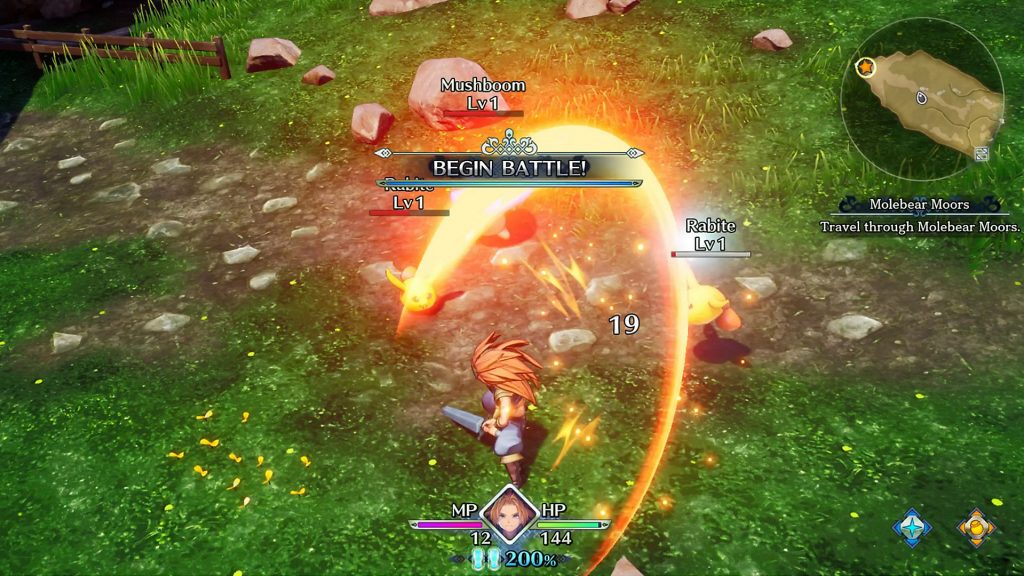
Trials of Mana has a pretty formulaic structure, not unlike that of a Legend of Zelda game. Shortly after leaving your home town you are tasked with finding eight mana stones. These are magical totems which have been put in place to lock away the Benevodons, elemental nasties whose only desire is to smash the cutesy anime world into dust. These mana stones can usually be found at the conclusion of a fairly small dungeon, which are populated by enemies and very simple puzzles. Each stone is guarded by a boss and defeating this boss character allows your characters to adopt the powers of the elemental associated with the mana stone. You know the drill. This should also in theory help to prevent the release of the Benevodons, but of course life is rarely that simple…
During the course of the game you meet your other chosen party members, and once recruited you can switch between them at will. The two characters you are not in control of are handled by the AI. They each feel quite similar given the speed and range of their melee attacks, but using a character with magical abilities enables you to take more a support role and stay out of the fray. Changing character involves a mere button press, with the only confusion being that if you switch mid-fight you might accidentally place yourself in the path of an enemy attack the AI was about to avoid on your behalf. It’s very seamless.
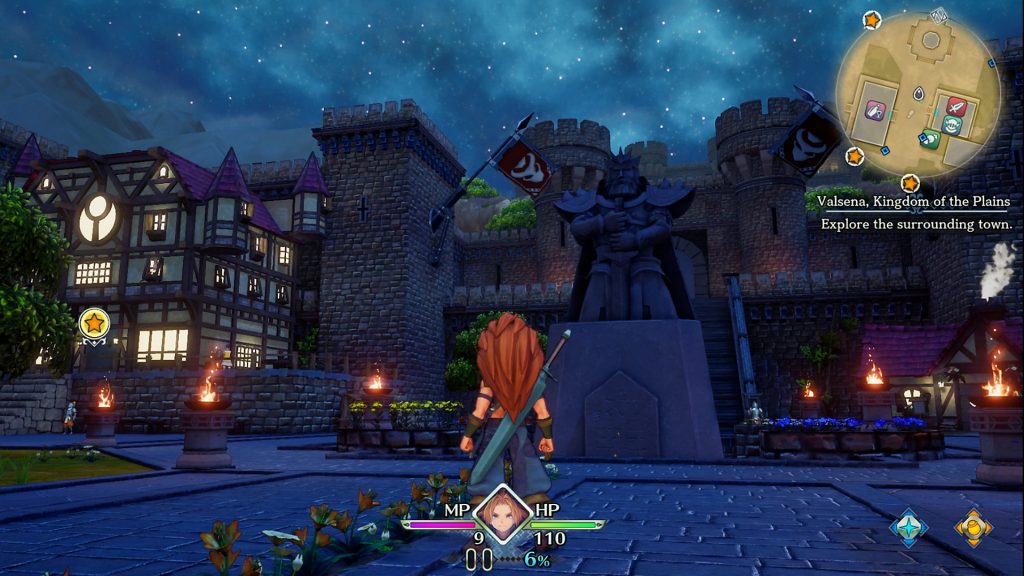
In terms of combat, Trials of Mana is an action RPG, but it takes some influence from turn-based titles. If you are spotted by an enemy you are immediately confined to a small arena, and sometimes additional enemies will spawn at this point. You can choose to fight or attempt to escape by running against the arena barrier for a number of seconds. Defeating all enemies results in rewards in the form of items, experience and money. I found it to be a pretty perfect blend.
The action feels pretty fluid and is generally really fun, especially as you develop your character. You have the ability to use strong and weak attacks and spells, but in contrast to the original Super Famicom release you can also evade and jump. Incoming strong enemy attacks are depicted by red markings on the play-field, which is great as it makes it far easier to react to the chaos of several enemies attacking simultaneously. You don’t have to be keeping an eye on each individual enemy if they’re not right next to you.
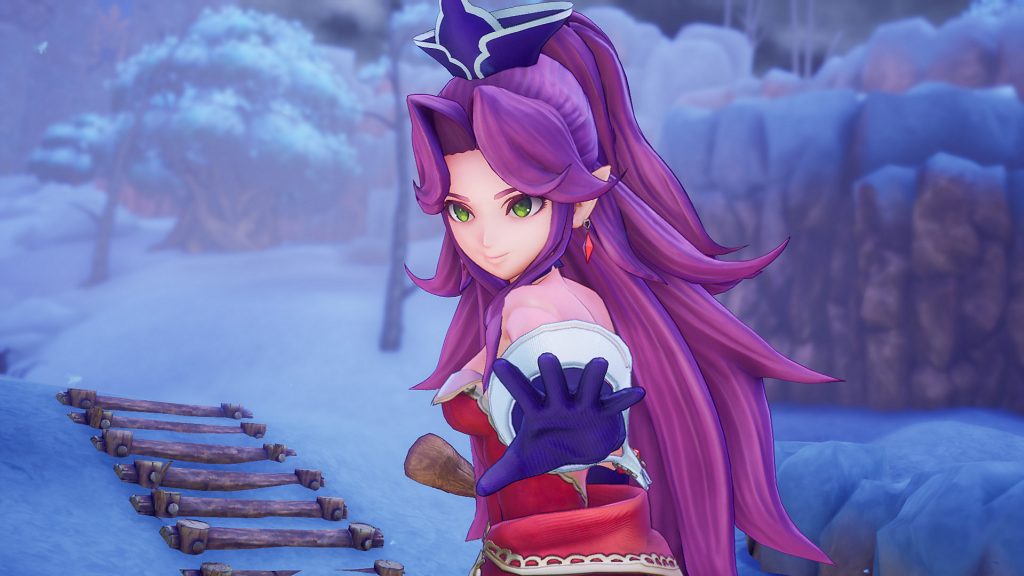
Your other party members will fight of alongside you and can also provide support via healing spells and buffs, providing those abilities are available to them. You can use a strategy menu to dictate how aggressive each ally is, whether or not they can use healing items and which enemies they will target first. For example, you can instruct your ally to always target the same enemy as you or the enemy who is farthest away.
While it’s great being able to determine how the A.I. characters behave it doesn’t make them any smarter. Your computer-controlled comrades will completely fail to avoid attacks, even those which are heavily telegraphed and especially damaging. Sometimes they will waste a special attack on a single weak enemy. Generally combat is extremely easy, but during boss battles it is frustrating when your pals are being downed constantly due to their inability to respond to threats. Your other party members are also not as aggressive as they need to be and will sometimes idle between attacks. This became a problem for me on some of the later bosses when all three party members needed to destroy targets on the play-field simultaneously within a short space of time. The original Super Famicom title featured full co-op but this has been removed for the remake, so unfortunately you’re stuck with baby-sitting a slightly inadequate AI for much of the experience.
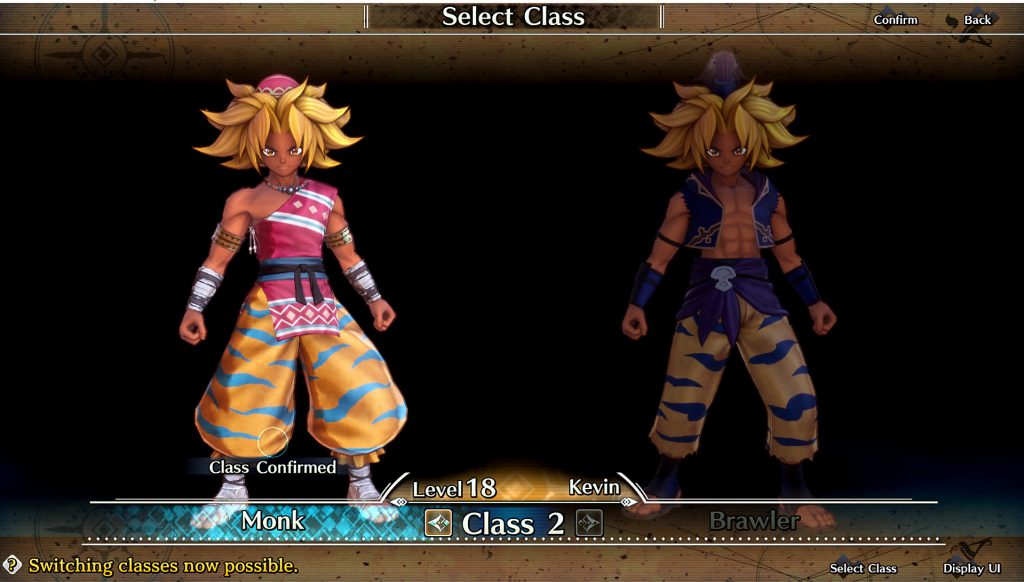
Each character can be levelled up across a number of stats and they also gain new abilities depending on which ones you focus on. If your character is a mage they might gain a fireball spell once the “Strength” stat reaches a certain level, for example. Your characters can also change class via the mana stones once a certain overall level is reached. This re-skins your character and can completely change the range of abilities open to the character at higher levels. If you choose to change to a “Light” class abilities will focus around healing and support, whereas the “Dark” classes usually focus around de-buffs and raw, destructive power. There are a number of classes each character can evolve into, and this introduces a lot of depth and replayability.
When you’re not in combat much of Trials of Mana revolves around exploration. The first part of the game is very linear, with your being forced to visit each location in a specific sequence, but there are concealed treasure chests and items throughout the world which add spice to the soup. In addition to this a character named “Lil’ Cactus” is hidden in many of the environments, and finding him multiple times results in massive rewards such as substantial shop discounts or being able to escape battles quicker. Later on you are given a choice as to where to go first, and this adds a nice feeling of player agency which is lacking in the early chapters. Unfortunately exploration can at times be frustrating. Enemies re-spawn after being defeated, which is great of level grinding but not so great if you are trying to find that elusive final treasure chest in a certain area, especially when you’re yet to unlock the quicker means of escape.
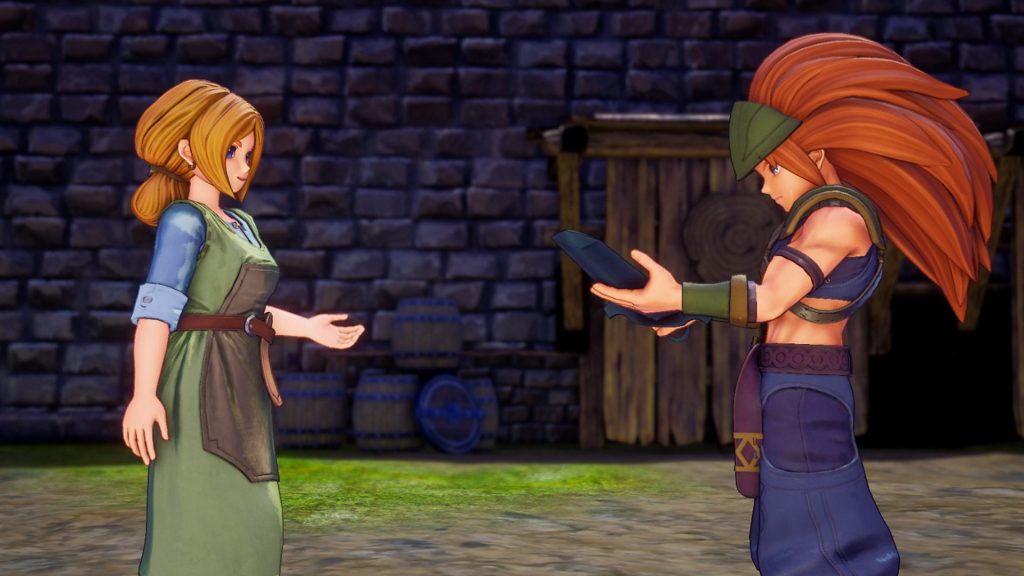
As with any RPG worth its salt, Trials of Mana has plenty of towns to visit. Each town has shops which sell weapons, armour and items. Unfortunately in spite of the fancy-sounding names these are just stat-boosted versions of the equipment you already have; the appearance of your armour doesn’t change (although your appearances changes when you switch class), and your weapons feel the same. It’s disappointing that there is so little variation. This can also make visiting town shops feel more like a chore rather than an exciting experience, as the shops rarely have anything surprising on offer. Variation is introduced later on as shops sometimes have multiple weapons and pieces of armour for purchase, but I had so much money at this point I just bought the best item each time.
An interesting mechanic the implementation of a calendar and day/night cycle. Each of the seven days of the week is named after an elemental spirit, and elemental attacks corresponding to that spirit will be stronger on those days for both you and your enemies. The time of day switches every so often, and this can govern which enemies pop up. Kevin is able to transform into a full-blooded beastman at night-time, amping up his power and ferocity. You can change the day or time by sleeping at an inn or using certain items. Given that Trials of Mana is quite easy on a standard playthrough you can disregard this mechanic entirely if you want to, although if you’re struggling with a particular boss it might be worth changing the day to boost an elemental attack they are weak to.
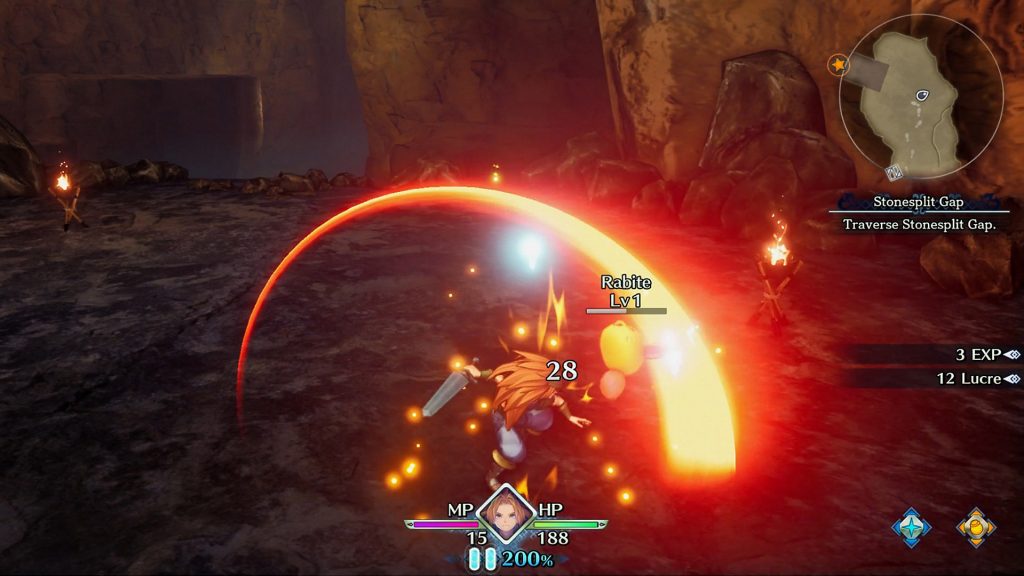
You might be wondering how a videogame story from 1995 holds up in 2020. As you might expect, Trials of Mana feels fairly ancient. In spite of the large cast of characters the story is simplistic. The heroes lack nuance and plot points are predictable. It’s easy to see why Square Enix chose to radically re-vamp Final Fantasy VII for th re-make, adding in new story content and developing characters beyond their Playstation iterations. I could fully imagine the slightly wooden cutscenes working perfectly well in a Super Famicom title, but here they feel half-baked. This doesn’t mean Trials of Mana is a total failure, but if you’re after a retro experience it may be better to go the whole hog and check out the Collection of Mana version. If you prefer three dimensional combat there is plenty to love though.
Graphics
Trials of Mana is a pretty game much of the time, although graphically it is a little dated. Bosses often look fantastic, and characters are nicely rendered. Environments often look great from a distance, but on occasion if you look closer you will notice low polygon models and cardboard trees the like of which haven’t been seen since the N64 days. Strangely enough this doesn’t seem to apply to all environments, and some definitely look significantly better than others. The simplistic assets make me wonder if concessions were made for the Switch port, and the PS4 version has not been properly optimised as a result. In addition to these complaints, it’s by no means game-breaking but there is pop-in all over the place, with foliage appearing metres from you as explore the environments. Some of the cutscenes feel unfinished and under-animated, as though the developers ran out of time. In some instances the static Seiken Densetsu 3 cutscenes are actually better at conveying the events of the story. Many of the towns look very similar due to copied and pasted assets, although there are some neat exceptions, such as the snowy hamlet of Alrant.
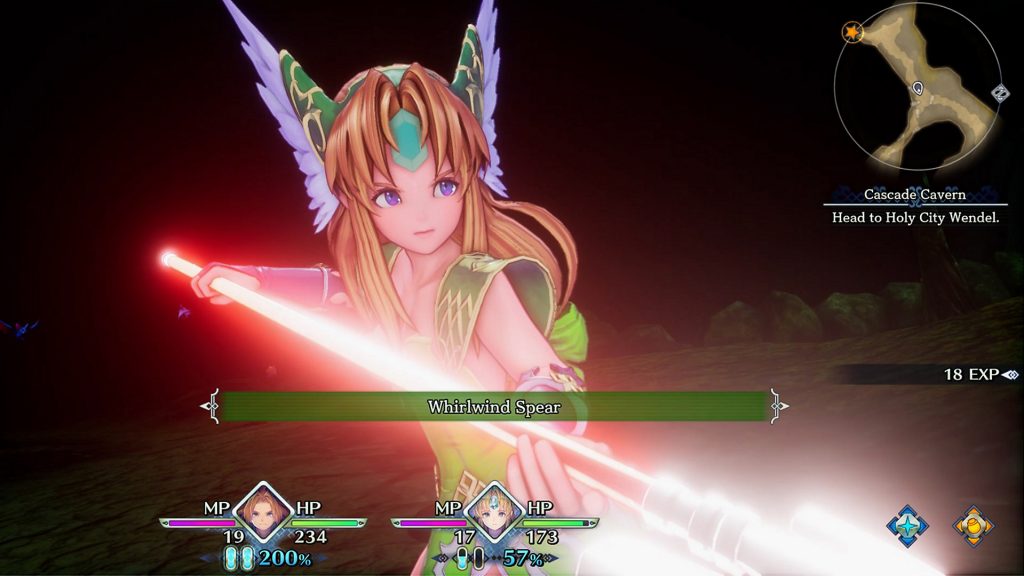
Audio
The music in Trials of Mana is great. The original Super Famicom tracks have been revamped with additional instrumentation. A nice feature is that you can switch to the original soundtrack if you prefer the 16-bit vibe, and it still sounds great. My only complaint is that some tracks are reused over and over, and it would have nice if each area had its own music.
Unfortunately the voice acting throughout is pretty shaky. Special mention goes to Charlotte, one of the playable characters, who speaks with an extremely irritating baby voice. Be wary of recruiting her to your team. It’s not just Charlotte unfortunately; there’s a general breeziness to the delivery of each line which makes the events of the story seem inconsequential at times. The stakes just never feel that high, which is a real weakness in an RPG in which the world is potentially about to end. You can switch to Japanese voice acting, which is usually a bit of saving grace. Unfortunately this isn’t the case here, and I could only stand the over-the-top delivery for half an hour or so before I had to switch back.
Sound effects are fitting, but the stacks of noises occurring simultaneously during battles can sometimes be a bit overwhelming.
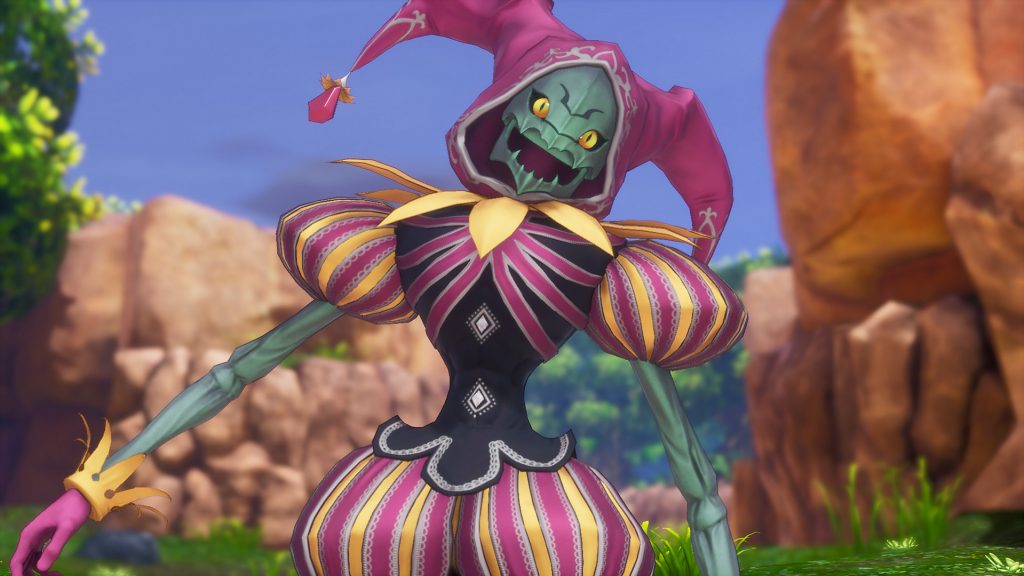
Longevity
Trials of Mana is a huge game. Each play-through is between 25 and 30 hours if you are not seeking out collectibles (and I highly recommend you do). You can play Trials of Mana multiple times to experience different story-lines or try playing as different characters. It definitely offers value for money, and although the combat can get repetitive for me it remains fun past the point where a turn-based RPG would have started to feel stale.
Conclusion
Trials of Mana is a good time and well worth the money. The combat feels great, and there are loads of locations to explore. It’s just a shame that the paint job feels a bit budget at times, and that the storytelling is so primitive.
I give Trials of Mana the Thumb Culture Silver Award.

Disclaimer: A code was received in order to write this review.
This article was written by Philip Brook
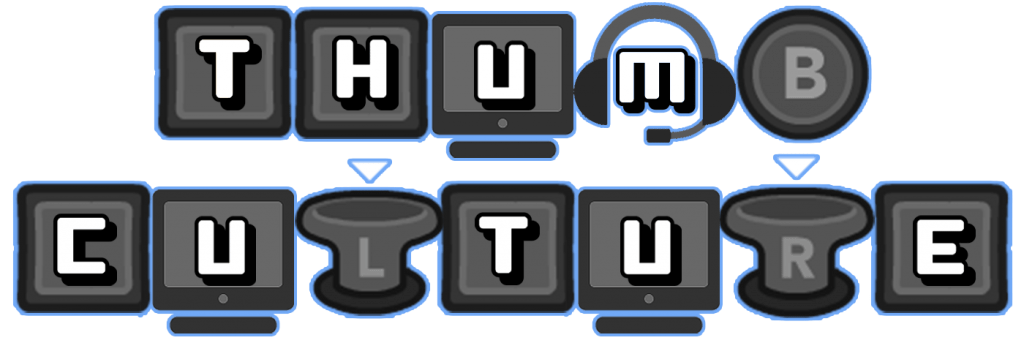
YouTube | FaceBook | Twitter | Instagram| Twitch
Spotify | iTunes | Google Play Music | Stitcher
